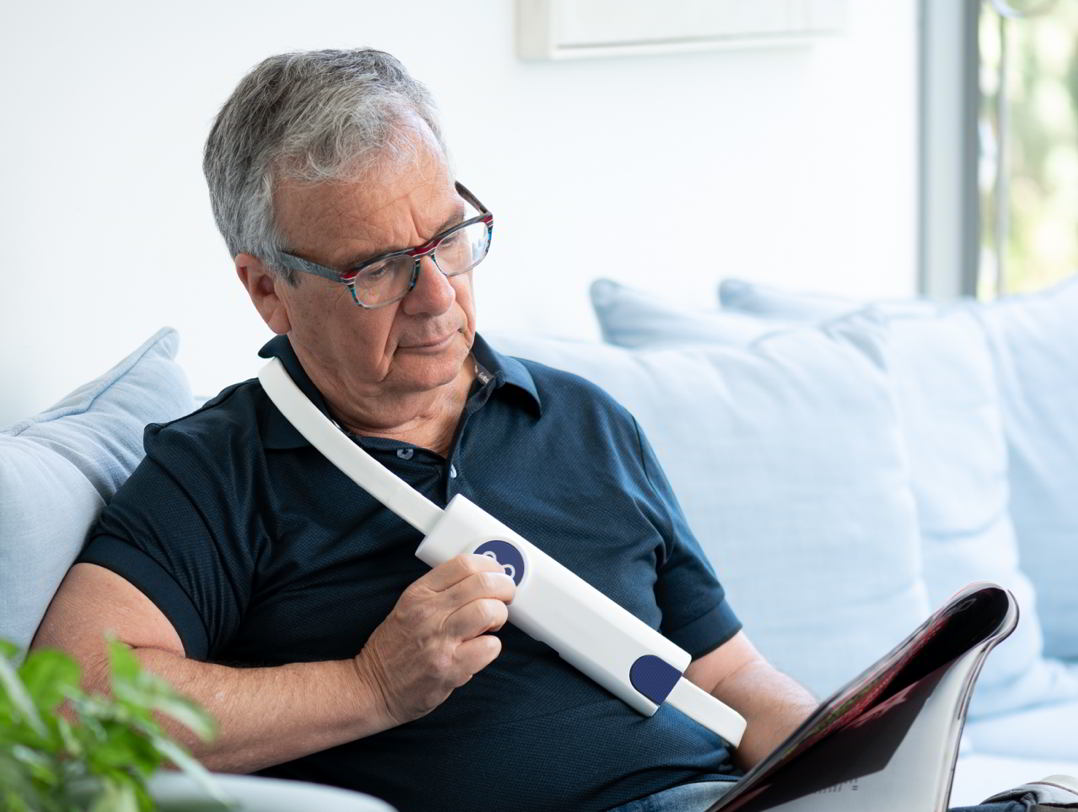Results on new remote heart failure monitoring device
A recently published study presented a new innovative, permanently implanted intracardiac device to remotely monitor left intra-atrial pressures in patients with chronic heart failure.
Wireless microcomputer may revolutionise approach to heart failure treatment
The remote management of heart failure by measuring intracardiac and pulmonary pressures using innovative permanent intracardiac microsensors could be a valuable strategy for identifying treatment and anticipating haemodynamic destabilisation. These sensors have the potential to reduce patients' hospitalisation rates and optimise their quality of life.
A recently published study evaluated the ease of use and patient approach to an innovative, permanently implanted intracardiac device to remotely monitor left intra-atrial pressures in patients with chronic heart failure. The device is called V-LAP and is manufactured by Vectorious Medical Technologies of Tel Aviv.
The V-LAP system is a miniaturised sensor implanted percutaneously in the interatrial septum. The device is inserted under deep sedation during a minimally invasive, low-risk procedure that takes up to one hour. The sensor is not powered by batteries, is remotely charged from the outside and can function for the patient's lifetime. The system communicates wirelessly with a companion device (a belt) that is placed on the patient's chest at the time of acquisition/transmission of left atrial pressure measurements.
The data collected by V-LAP is sent to a cloud. In real time, a doctor can remotely adjust the patient's medication based on the data. At the first follow-up after implantation, patients and caregivers were asked to fill out a questionnaire about the usability of the system, the ease of performing the various tasks required (data acquisition and transmission) and overall satisfaction. Answers to the questions were mainly given using a 5-point Likert scale (1: very poor, 2: poor, 3: average, 4: good, 5: excellent). Further follow-up of the patients was performed at 3, 6 and 12 months.

The use and acceptance of the 14 patients who were the first worldwide to use the V-LAP system and of the healthcare professionals who used it were analysed. No periprocedural morbidity/mortality was observed. After implantation of the device, a specific training course was organised for patients and their caregivers before discharge. At the first follow-up, the mean score for overall comfort in using V-LAP was 3.7 (SD 1.2) with 93% (13/14) of patients able to apply and use the system independently. For caregivers, the mean score for overall ease and comfort in using the device was 4.2 (SD 0.8). No significant differences were found between the responses of patients and caregivers to the questionnaires.
There was a general trend for higher scores in the patients' usability reports at subsequent follow-ups, where the score for overall comfort in using the technology increased from 3.0 (SD 1.4) to 4.0 (SD 0.7) (P=.40) and comfort in putting on and adjusting the chest measurement belt increased from 2.8 (SD 1.0) to 4.2 (SD 0.4) (P=.02).
Despite the severity of their disease and the complexity of their comorbidity profile, the study shows that patients are comfortable using V-LAP technology and, in most cases, can acquire and transmit haemodynamic data correctly and consistently. Although overall patient and caregiver satisfaction with the V-LAP system appears to be acceptable, the authors believe that improvements can be achieved after refinement of the design of the measurement instruments.
Reference:
D Ancona G, Murero M, Feickert S, Kaplan H, Öner A, Ortak J, Ince H. Implantation of an Innovative Intracardiac Microcomputer System for Web-Based Real-Time Monitoring of Heart Failure: Usability and Patients' Attitudes. JMIR Cardio. 2021 Apr 21;5(1):e21055. doi: 10.2196/21055. PMID: 33881400.